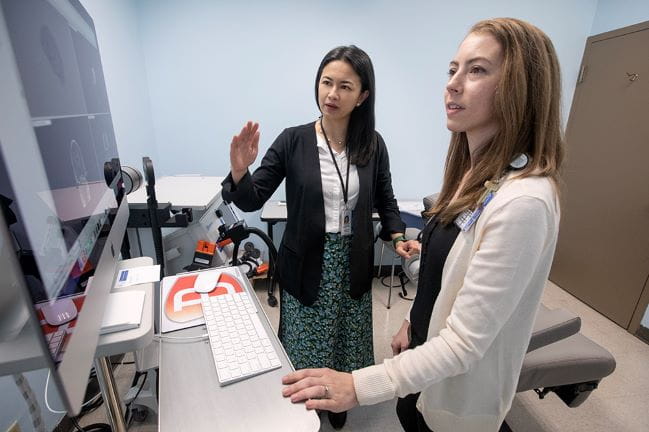The Dawn of Superhuman Precision in Neurosurgery
In the intricate and delicate world of neurosurgery, the surgeon’s hand has long been the ultimate instrument, a tool honed by years of training to perform impossibly precise movements. However, even the steadiest human hand is subject to natural limitations—physiological tremor, fatigue, and constraints of scale. For decades, these limitations have defined the boundaries of what is possible within the microscopic landscape of the human brain. Now, a groundbreaking technological leap is pushing those boundaries further than ever before. The recent success of the world’s first fully robotic microsurgical procedure inside the human brain marks a pivotal moment in medical history. This is not merely an incremental improvement; it is a paradigm shift, leveraging advanced robotics and artificial intelligence to grant surgeons capabilities that transcend human physical limits. This development signals a new era where complex intracranial procedures, once deemed too risky or impossible, are becoming a clinical reality, promising safer surgeries and better outcomes for patients with life-threatening neurological conditions. This evolution is a major headline in Robotics News and is reshaping the landscape of modern medicine.
Understanding the Robotic Microsurgery Revolution
To appreciate the magnitude of this achievement, one must first understand the challenges of traditional microsurgery. Neurosurgeons operate under powerful microscopes, manipulating tissues and vessels that are often less than a millimeter in diameter. The slightest unintended movement can have catastrophic consequences. Robotic surgical systems are engineered to overcome these fundamental human limitations through a combination of sophisticated hardware and intelligent software.
Key Technological Pillars of Surgical Robotics
At the heart of these systems are several core technologies that work in concert to augment the surgeon’s skill. The first is tremor filtration. Advanced algorithms actively identify and cancel out the natural, high-frequency tremors present in every human hand, resulting in perfectly smooth and steady instrument motion. The second, and perhaps most crucial, is motion scaling. This feature allows the surgeon, seated at an ergonomic console, to make comfortable, intuitive hand movements that the robotic arms translate into micro-movements at the surgical site. For example, a one-centimeter movement by the surgeon’s hand could be scaled down to a one-millimeter movement by the robotic instrument, enabling a level of precision that is physically impossible for a human to achieve directly. This technology is a significant topic in Health & BioAI Gadgets News, as it represents a direct human-machine interface designed for life-saving tasks.
The Symbiosis of Surgeon and Machine
Unlike the automated robots seen in manufacturing or the consumer-focused devices in Robotics Vacuum News, surgical robots are not autonomous. They are master-slave systems, acting as a seamless extension of the surgeon’s hands and eyes. The surgeon remains in complete control, viewing a high-definition, 3D magnified view of the surgical field from the console. The robotic arms, equipped with tiny, wristed instruments, replicate the surgeon’s movements with unparalleled fidelity. These instruments, often just a few millimeters in diameter, can rotate and articulate in ways the human wrist cannot, providing seven degrees of freedom. This dexterity allows for meticulous dissection, suturing, and manipulation of delicate neural and vascular structures deep within the brain, a domain where precision is paramount. The integration of AI-enabled Cameras & Vision News is critical here, as enhanced imaging and augmented reality overlays can provide the surgeon with real-time data and guidance directly within their field of view.
A Deeper Dive: The Anatomy of a Robotic Neurosurgery System

The success of a robotic microsurgical procedure is not the result of a single innovation but the culmination of advancements across multiple technological domains. A typical system consists of three primary components: the surgeon’s console, the patient-side cart with robotic arms, and a sophisticated vision cart.
The Surgeon’s Command Center
The console is the nerve center of the operation. Here, the surgeon sits comfortably, which reduces physical fatigue during long and demanding procedures. They look into a stereoscopic 3D viewer that provides a magnified, immersive view of the operative site. Hand controllers and foot pedals are used to manipulate the robotic arms and instruments, control the camera, and manage energy devices. The interface is designed to be intuitive, translating the surgeon’s natural hand and wrist movements into corresponding robotic actions. The system’s software is the unsung hero, running millions of calculations per second to filter tremors, scale motion, and provide haptic feedback. This level of computational control draws parallels to the complex systems discussed in Autonomous Vehicles News, where real-time processing and fail-safes are critical for safety.
The Patient-Side Robotic Arms
The patient-side cart holds the robotic arms that perform the surgery. These arms are positioned over the patient and hold the specialized micro-instruments. The design of these instruments is a marvel of modern engineering. They are incredibly small yet durable and capable of complex articulations. The ability to swap these instruments quickly and efficiently during a procedure is crucial. The precision of these arms is measured in microns, allowing for tasks like suturing blood vessels thinner than a human hair. The data from these arms, including force feedback and position, is a rich source of information, tying into the broader trends seen in AI Sensors & IoT News, where physical actions are translated into actionable digital data.
Advanced Vision and AI Integration
The vision cart processes the images from the endoscope or microscope and displays them on the surgeon’s console. Modern systems are increasingly integrating AI to enhance this visual data. For instance, AI algorithms can automatically identify critical structures like nerves and blood vessels, highlighting them for the surgeon to avoid. They can also provide augmented reality overlays, projecting pre-operative MRI or CT scans directly onto the live surgical view. This fusion of vision and intelligence is a hot topic in AI-enabled Cameras & Vision News and is transforming the surgeon’s perception and decision-making process. Future iterations may even incorporate AI Assistants News, with a virtual assistant providing verbal alerts or suggesting optimal tool-paths based on the real-time surgical context.
Implications and the Future of Brain Surgery
The advent of robotic microsurgery in the intracranial space has profound implications for neurosurgery and patient care. It opens the door to procedures that were previously considered inoperable and makes existing procedures safer and more effective.

Expanding the Boundaries of the Possible
Consider the treatment of complex brain aneurysms or arteriovenous malformations (AVMs) located deep within the brain. Reaching and repairing these vascular anomalies requires navigating a dense network of critical neural pathways. Robotic assistance can make these delicate repairs more feasible and reduce the risk of collateral damage. Similarly, in tumor resection, the goal is to remove as much of the cancerous tissue as possible while preserving healthy brain function. The enhanced dexterity and precision of a robotic system allow surgeons to dissect tumors from eloquent areas of the brain with greater confidence. This technology will also be a critical enabler for future advancements, particularly in the field of Neural Interfaces News. The precise placement of brain-computer interface (BCI) electrodes, which is essential for their function, is a task perfectly suited for a robotic platform.
Democratizing Surgical Expertise and Training
Another significant implication is the potential to democratize surgical expertise. A world-renowned surgeon could, in theory, mentor or even proctor a procedure from thousands of miles away via a remote console. While telesurgery faces regulatory and latency hurdles, the training applications are immediate. Surgical simulators using the same robotic consoles can provide residents with realistic, risk-free practice. The data collected from every movement during both simulated and real surgeries can be analyzed by AI to provide objective feedback on performance, accelerating the learning curve. This aligns with trends in AI Education Gadgets News, where technology is used to create more effective and personalized training environments.
Weighing the Promise: Benefits, Challenges, and Recommendations

While the potential of robotic microsurgery is immense, its widespread adoption requires a balanced consideration of its advantages and the hurdles that lie ahead.
Advantages and Opportunities
- Enhanced Precision and Dexterity: Overcomes human physical limitations, enabling finer and more stable movements.
- Improved Patient Outcomes: Potentially leads to less invasive procedures, reduced blood loss, shorter recovery times, and lower risk of complications.
- Ergonomics and Surgeon Longevity: The seated console position reduces physical strain on surgeons, potentially extending their careers.
- Enabler for New Procedures: Makes previously inoperable cases treatable and paves the way for future innovations like advanced BCI implantation.
Challenges and Considerations
- High Cost of Acquisition and Maintenance: These systems represent a significant capital investment for hospitals, which can be a barrier to access.
- Steep Learning Curve: Surgeons and their teams require extensive training to become proficient with the new technology.
- Lack of Haptic Feedback: While some systems are developing it, many current platforms lack true tactile feedback, forcing surgeons to rely solely on visual cues.
- System Complexity and Downtime: As with any complex technology, there is a risk of technical malfunction, requiring robust support and contingency planning.
For healthcare institutions considering this technology, a phased approach is recommended. Start with a comprehensive cost-benefit analysis, identify surgical champions to lead the program, and invest heavily in structured training for the entire surgical team. Collaboration with manufacturers, as highlighted in AI Research / Prototypes News, can also help institutions stay at the forefront of technological updates and best practices.
Conclusion: A New Symbiotic Partnership in the Operating Room
The successful completion of the first robotic intracranial microsurgery is more than just a single achievement; it is a declaration that the future of surgery has arrived. It represents the ultimate fusion of human intellect and machine precision, a symbiotic partnership that elevates the surgeon’s craft to an unprecedented level. While challenges of cost, training, and integration remain, the trajectory is clear. As these systems become more intelligent, accessible, and capable, they will fundamentally reshape the standard of care in neurosurgery and other complex medical fields. This milestone is a powerful testament to human ingenuity and a beacon of hope for countless patients, proving that by embracing technology, we can overcome our own limitations to heal, repair, and explore the most complex frontier of all: the human brain. The ongoing developments in this space will continue to be a leading story in Robotics News and Health & BioAI Gadgets News for years to come.










